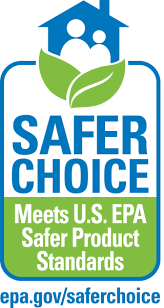Navigating the Chemical Maze: A Guide to Safeguarding Your Environment
Navigating the Chemical Maze: A Guide to Safeguarding Your Environment
In the hustle and bustle of daily life, it's easy to overlook the invisible threats lurking in the products we use every day. From the cleaners we use to sanitize our homes to the personal care items we apply to our bodies, harmful chemicals often hide in plain sight, posing potential risks to both personal health and the environment. In this exploration, we delve into the importance of examining the products we use, seeking out alternatives, and developing a deeper understanding of product labels to safeguard our environment and well-being.
The first step in safeguarding our environment is to critically examine the products we bring into our homes. Many commonly used household items contain a cocktail of chemicals that can be harmful to both human health and the ecosystem. For instance, certain cleaning products may contain chlorine bleach, ammonia, and other harsh chemicals that can irritate the skin, eyes, and respiratory system, as well as pollute waterways and harm aquatic life. Similarly, personal care products such as shampoos, lotions, and cosmetics often contain ingredients like parabens, phthalates, and sulfates, which have been linked to hormonal disruption and other adverse health effects.
Armed with this knowledge, it's essential to explore alternatives that minimize exposure to harmful chemicals. Fortunately, there is a growing market for eco-friendly and natural products that offer safer alternatives for daily use. Plant-based cleaners, for example, use ingredients derived from renewable resources like citrus fruits and essential oils, effectively cleaning without the need for harsh chemicals. Likewise, organic and natural personal care products often utilize botanical extracts and essential oils instead of synthetic fragrances and preservatives, reducing the risk of skin irritation and environmental contamination.
However, navigating the world of product labels can be daunting, as terms like "natural," "eco-friendly," and "green" are often used loosely and can be misleading. Developing a deeper understanding of product labels is crucial in making informed choices for personal and environmental health. Look for certifications from reputable organizations such as the Environmental Protection Agency (EPA) or the USDA Organic seal, which indicate that a product meets specific standards for safety and sustainability. Additionally, familiarize yourself with common terms like "biodegradable," "non-toxic," and "fragrance-free," which signal safer options for both personal health and the environment.By taking proactive steps to avoid harmful chemicals in our daily lives, we not only protect ourselves and our families but also contribute to a cleaner, healthier planet. Every small change, from switching to eco-friendly cleaning products to choosing organic personal care items, makes a difference in reducing our exposure to harmful chemicals and minimizing our impact on the environment. Moreover, by developing a deeper understanding of product labels and critically evaluating the products we use, we empower ourselves to make choices that align with our values of health and sustainability.
In conclusion, safeguarding our environment from harmful chemicals requires a multifaceted approach that involves examining the products we use, exploring alternatives, and developing a deeper understanding of product labels. By making informed choices and embracing eco-friendly alternatives, we can create a safer, healthier world for ourselves and future generations. Together, let's navigate the chemical maze and pave the way towards a cleaner, greener future.






Comments
Post a Comment